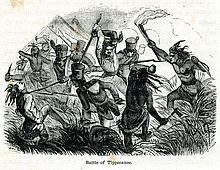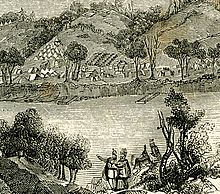Illustrator Croome and Publisher Walker
Publishers and artists faced considerable challenges related to the expense of publishing pictorial histories. Given these constraints, it is not surprising to learn that publishers of early pictorial histories used illustrations sparingly. Walker did not want pictures to overwhelm the text of Frost’s Pictorial History of the United States, although in failing to elaborate with purposeful detail the features of some of his subjects he ran the counter-risk of rendering illustrations more meaningful than he intended.
Walker knew that it was a more difficult and expensive proposition to commission and execute original works of art for the book industry than to recycle old ones, so he often employed copyists to “adapt” images from other historical texts. As a result of such piracy (common in its day because of a lack of adequate copyright legislation), illustrations in Frost’s Pictorial History of the United States are sometimes transposed recklessly out of context. In a number of cases, preexisting images were modified inadequately for Walker’s work, such as when an eighteenth-century English print of Burgoyne’s encampment at Saratoga was redrawn to accommodate the limitations of page size in Frost’s Pictorial History, in the process skewing the historical record with respect to the number and strategic advantage of the General’s forces. [Image 14].
 Enlarge
Enlarge
Walker also hired lesser-known artists at reduced costs, such as engraver Benjamin Franklin Waitt and H. B. Brown , with some noticeable drop-off in quality. He commissioned four Native American scenes from then-unknown illustrator and Croome-student F. O. C. Darley [Image 15]. Darley used a black-ink-line technique to produce “outline sketches,” a linear style that would become his trademark as a mature illustrator in the 1870s but that appeared unfinished and incongruous in comparison with other illustrations in Frost’s Pictorial History.[24] Walker also hired George T. Devereux to engrave a handful of less challenging pictures discarded by Croome. Devereux’s reputation as a lesser light among the Brandywine illustrators was acknowledged in the preface to a Philadelphia sketchbook he engraved, in which the publisher admitted that others had been approached to do the work in advance of Devereux. “During the particular time we were engaged in the preparation of these pages,” the publisher conceded, “an unusual activity prevailed among our best wood engravers, in consequence of large orders from the Government. We were, therefore, forced to employ artists of ordinary talent.” One wonders what Devereux thought of that curious admission![25]


